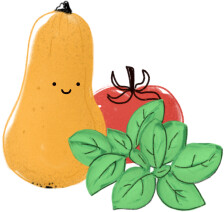Indigo Cherry Drops

Variety
Indigo Cherry Drops
Approved Data
created by steffen a. at 06.05.2023
Features
Growth habit
hoch
muss gestützt werden
immer neue Seitentriebe
Fruit shape
light yellow
Location
Gewächshaus
geschützt
Freiland
Geschmack
saftig
süß
Season Overview
Propagating
Planting
Harvest
J
F
M
A
M
J
J
A
S
O
N
D
Description
Indigo Cherry Drops is an exceptional cherry tomato with a great fruit color. Its plants are quite robust and can reach a height of over 2m. Its fruits grow in large clusters and weigh up to 20g. The side of the tomatoes facing the sun turns deep blue-black, while the side facing away from the sun turns dark red. The dark color is caused by anthocyanin, which is very healthy and is also found in blueberries, for example. It is one of the antioxidants. They have a small tip, are juicy and sweet and are ideal for snacking and eating fresh. Indigo Cherry Drops is now an improved version of Indigo Rose with larger fruits and higher yields. It was bred by Dr. Jim Myers from Oregon State University.
Non hybrid
Not frost resistant
Growing tips
Tomatoes require a lot of light, warmth, water and nutrients. They are grown from seed on the windowsill from March. The seedlings should be planted deep, up to the first leaf base, so that the root system is enlarged by additional lateral roots. Unlike most other crops, tomatoes should always be planted in the same place. Under-sowing with low-growing plants is a good option. - Watering tomatoes: Depending on whether you are pre-sowing or direct sowing tomatoes, and depending on the location and variety, you will need to water your tomato plants differently often. Tomatoes can develop very deep roots that can even draw water from the groundwater. In this case, you hardly need to water them, if at all. Pay attention to the leaves, if they hang limp you should water your tomato plants. The soil dries out more quickly, especially in pots, raised beds and raised beds, so you will need to water them more often.
Details
Light requirement
Sunny
Water requirement
Moist
Soil
Light (sandy)
Nutrient requirement
High
Plant distance
50 cm
Row spacing
10 cm
Seeding depth
0.3 cm
Companion Plants
Asparagus
Basil
Bean (Broad bean / Faba bean / Field bean)
Bean (Dwarf bean)
Bean (Runner bean)
Broccoli
Brussels sprouts
Cabbage (Cabbage)
Cabbage (Savoy cabbage)
Carrots
Cauliflower
Celery (Celeriac / Celery root)
Celery (Celery)
Chili
Chives
Collard greens (Kale)
Collard greens (Tuscan kale / Dinosaur kale / Palm tree kale)
Common marigold
Cress
Garlic
Kohlrabi / German turnip / Turnip cabbage
Leeks
Lettuce (Lettuce)
Mint
Napa cabbage / Chinese cabbage
Onion
Onion (Spring onion)
Oregano
Pak Choi
Parsley
Pepper / Paprika
Radish
Radishes
Spinach (Summer)
Antagonistic Plants
Diseases
Grey mold
Early blight of potato
Pests
Thrips
Aphids
Spider mites
White fly